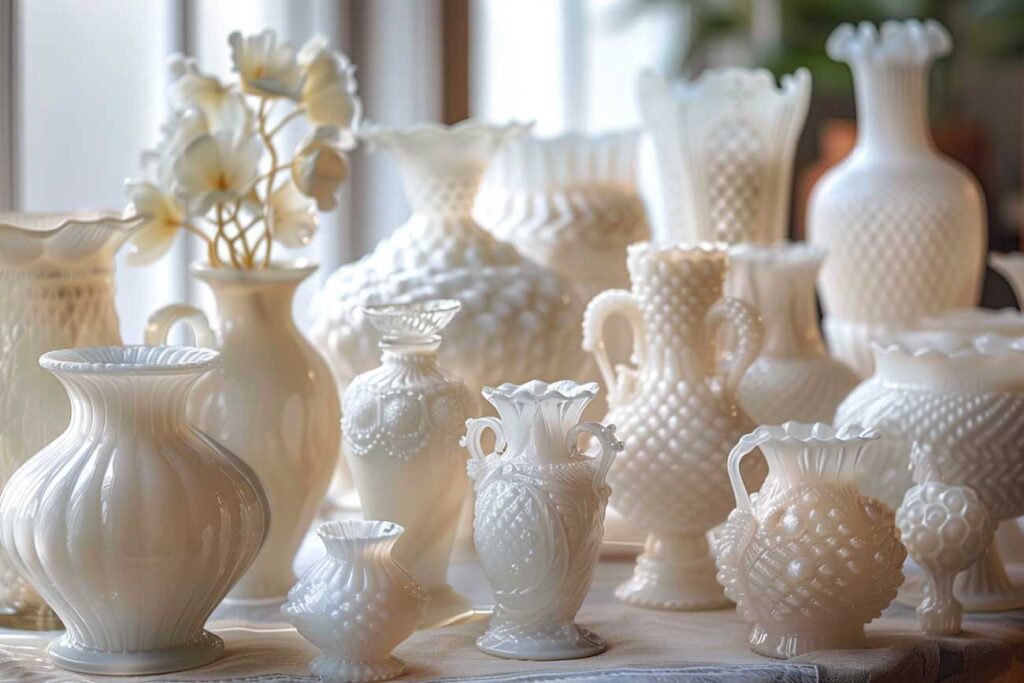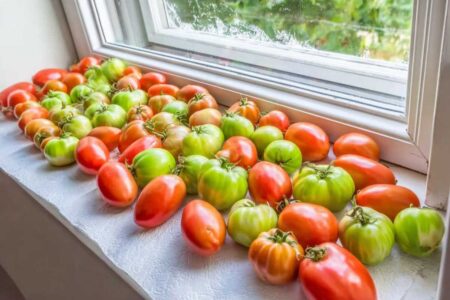As someone who appreciates minimalism and vintage charm, I’ve fallen in love with incorporating milk glass into my home decor. There’s something so intriguing about the milky, opalescent finish and intricate patterns that really elevate a minimalist space. After experimenting with milk glass in different rooms, I’ve found some key tips for letting these special pieces steal the show.
Related Post: The Intriguing Value of Milk Glass: Exploring Its Significance and Appeal.
Choose strategic placement.

I like to think of milk glass as the punctuation mark in a minimalist space. Don’t overwhelm with too many pieces. Instead, select one or two eye-catching milk glass pieces and give them room to shine. I often place my milk glass vase on a console table against a blank wall. Or, I style my milk glass cake stand on a clean kitchen counter. These solo placements let the gorgeous glass take center stage.
Opt for open surfaces.
Too much clutter will only detract from the milk glass details. I stick to open, uncluttered surfaces. These include clear kitchen counters, console tables, floating shelves, and mantels. This ensures my milk glass votive holders and appetizer plates get the spotlight. They deserve it.
Enhance with neutral backgrounds.
Keep surroundings simple. This includes walls, furniture, and decor. It will make the ornate milk glass creations pop even more. I like soft neutrals. For example, white, beige, or light woods. They go well with the glass. You can also let the milk glass be the pop of pattern against solid colored walls or bedding.
Play with lighting.
I love placing milk glass vases and candleholders near windows or pendant lights. The natural light or centered beam highlights the milky patina. You can also experiment with hanging glass pieces like terrariums. Hang them near spotlights or lamps. Illumination is key for letting these translucent creations sparkle.
Incorporate minimalist textures.
Keep additional materials sleek and simple. Metals, smooth woods, and soft textiles enhance milk glass without competing. I set my glass cake dome on a smooth marble counter or pair etched carafes with linen napkins for easy elegance. Simple, natural textures boost the sophisticated style.
Try personalized DIY pieces.
Along with antique flea market finds, you can make custom milk glass-inspired decor. I made terracotta pots to look like milk glass for my outdoor succulents. I even hand-painted an old vase with white acrylic paint. Personalize with patterns or display keepsakes in DIY glass cloches.
5 Interesting Facts About Milk Glass
- Historical Origins in Venice: Milk glass, also known as “opal” glass, originated in 16th-century Venice. The Venetians were the first to make this opaque white glassware. It was meant to look like the much-admired but expensive porcelain.
- Victorian Era Popularity: The Victorians likely coined the term “milk glass” in the 19th century. They prized the material for its resemblance to porcelain. Porcelain was a luxury that only the wealthiest could afford at the time. This period saw milk glass become a prized item. Its production peaked during the Victorian era.
- Mid-Century Resurgence: After a decline in popularity, milk glass became popular again in the 1950s and 1960s. This was because of mass production. Companies like Anchor Hocking, Fenton, and Westmoreland were key. This made milk glass items widely available and cheap. It led to a surge in collecting and using them.
- Diverse Uses and Designs: Milk glass was not just for show; it had practical uses as well. Victorians had a dish for everything. They had stands for bananas and cruets for oil and vinegar. The glassware also had many patterns. These included the Hobnail and the Paneled Grape. These patterns were popular among collectors.
- Identifying Authentic Pieces: For collectors, identifying genuine antique milk glass pieces is key. One method is to look for the “Ring of Fire.” It is an iridescent halo of reds, blues, and greens. You can see it by holding the glass up to natural light. This effect is due to the iridized salts used in older milk glass production.
Milk glass continues to be a beloved collectible. Its simple but elegant appearance makes it a versatile choice for home decor. It is also a subject of interest for glass enthusiasts.
With its alluring finish and graceful designs, milk glass punctuates a minimalist home. Follow these tips to create an atmosphere where the translucent pieces command attention. Let them be the artwork in your tranquil, uncluttered spaces.






